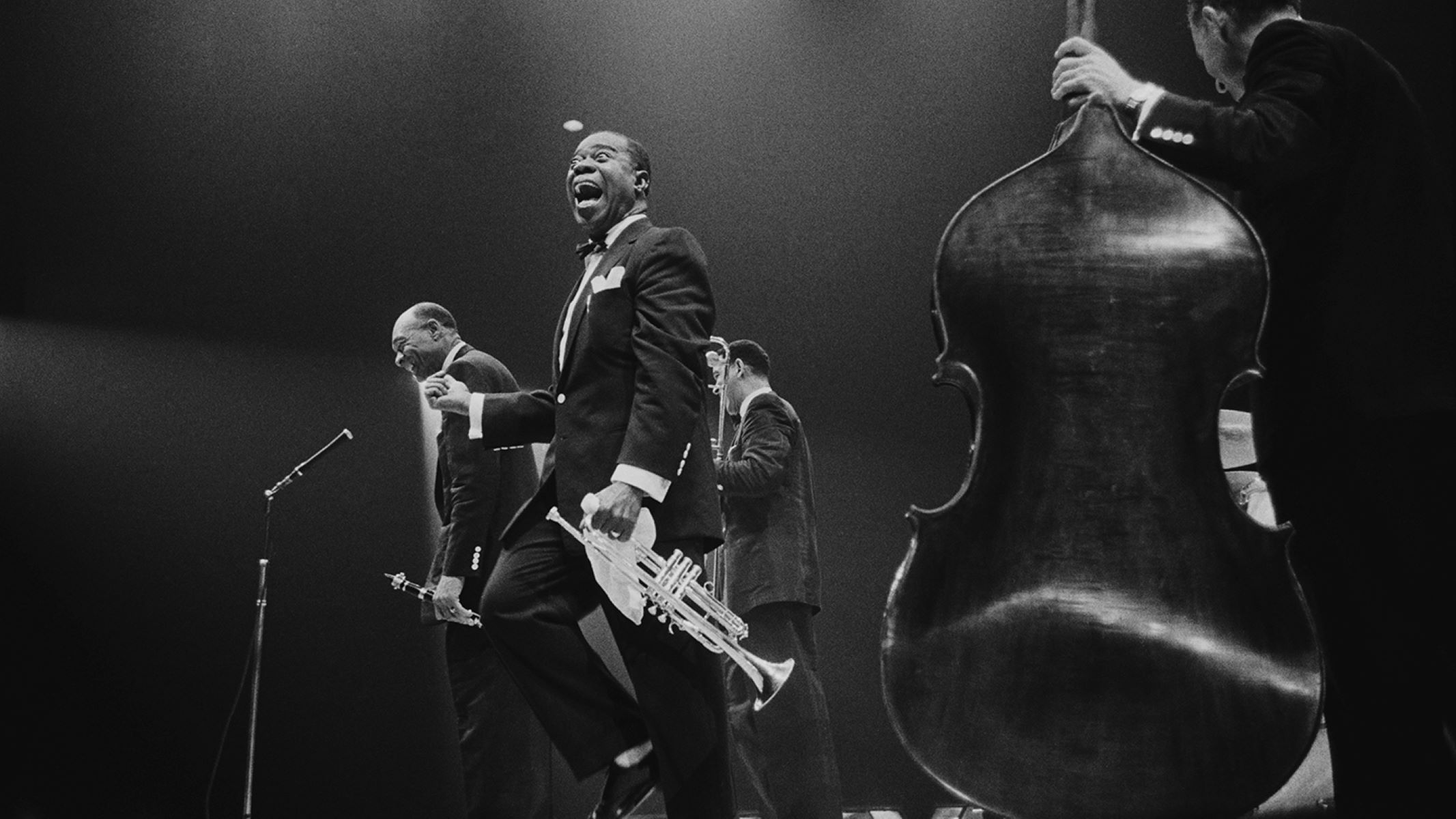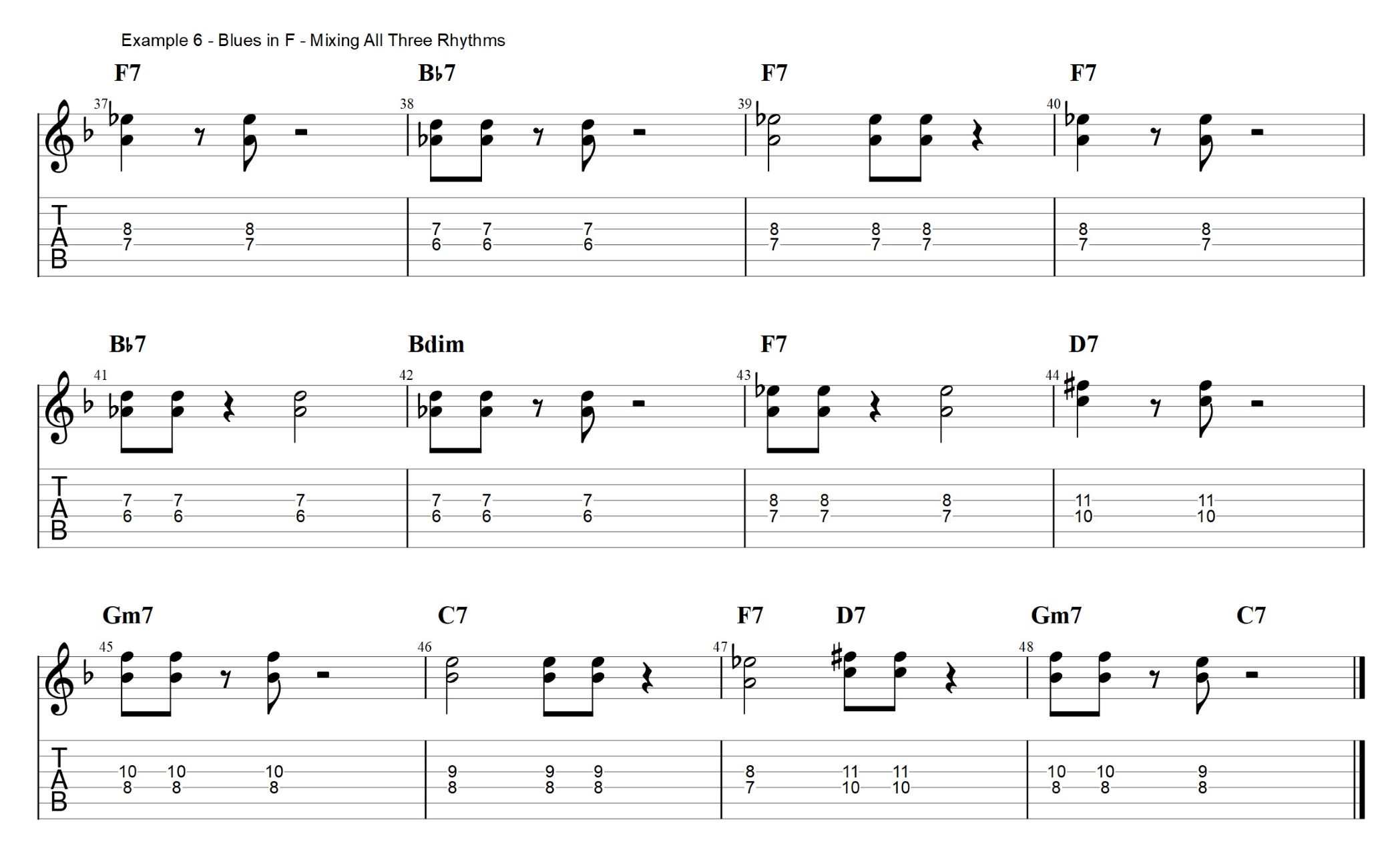

Jazz
What Is Smooth Jazz
Modified: February 15, 2024
Discover the soothing melodies of jazz, a genre known for its smooth and soulful sounds. explore the history and characteristics of jazz music in this comprehensive guide.
(Many of the links in this article redirect to a specific reviewed product. Your purchase of these products through affiliate links helps to generate commission for AudioLover.com, at no extra cost. Learn more)
Table of Contents
Introduction
Smooth Jazz is a genre of music that emerged in the late 1970s and early 1980s. It has its roots in jazz, but incorporates elements of R&B, pop, and funk. Known for its mellow and easy-listening sound, smooth jazz has gained popularity worldwide and has become a staple in many radio stations and music streaming services. With its soothing melodies, lush harmonies, and polished production, smooth jazz has garnered a dedicated following and continues to attract new fans.
The term “smooth jazz” was coined in the late 1980s to describe a commercially successful style of jazz that appealed to a wider audience. It was characterized by its accessibility, catchy hooks, and a focus on melodic improvisation rather than complex harmonic structures. Smooth jazz often features a prominent saxophone or guitar as the lead instrument, accompanied by keyboards, bass, drums, and sometimes vocals.
Smooth jazz has its origins in the fusion jazz movement of the 1970s, which combined jazz with elements of rock, funk, and soul. Artists like Grover Washington Jr., George Benson, and Bob James were pioneers in this genre, incorporating more melodic and accessible elements into their music. This new sound resonated with audiences, making jazz more appealing to a broader demographic.
One of the defining characteristics of smooth jazz is its emphasis on smoothness and relaxation. The melodies are often gentle and soothing, creating a calm and laid-back atmosphere. The rhythm section provides a steady groove, while the instruments take turns soloing and adding their own melodic flair. The overall sound is polished and sophisticated, making it suitable for various occasions, from quiet evenings at home to upscale events and jazz festivals.
Smooth jazz has been embraced by a diverse range of artists, from accomplished jazz musicians to popular R&B and pop artists. It has provided a platform for collaboration and experimentation, resulting in fusion projects that blend different musical styles and cultures. This genre has also extended its influence into contemporary music, with elements of smooth jazz incorporated into pop, hip-hop, and electronic music.
Despite its popularity, smooth jazz has not been without its detractors. Critics argue that it lacks the complexity and improvisational nature of traditional jazz, and accuse it of being formulaic and repetitive. However, proponents of smooth jazz appreciate its accessibility and melodic beauty, arguing that it provides a gateway for newcomers to delve deeper into the world of jazz.
As the music industry continues to evolve, the future of smooth jazz remains promising. The genre has adapted to new technologies and platforms, reaching a global audience through online streaming services and digital platforms. While it has faced its share of challenges, smooth jazz continues to thrive and evolve, attracting a new generation of artists and listeners who value its smooth and sophisticated sound.
In this article, we will explore the origins, characteristics, instruments, popular artists, evolution, criticisms, and the future of smooth jazz. Join us on this musical journey as we delve into the world of smooth jazz and uncover its unique charm and appeal.
Origins of Smooth Jazz
Smooth jazz traces its roots back to the fusion jazz movement of the 1970s. During this period, jazz musicians began incorporating elements of rock, funk, and soul into their sound, creating a more accessible and commercially appealing style of jazz. Artists like Grover Washington Jr., George Benson, and Bob James were at the forefront of this fusion movement, paving the way for the smooth jazz genre.
In 1976, Grover Washington Jr. released his album “Mister Magic,” which became a breakthrough success. The album blended jazz with elements of R&B and funk, creating a smoother and more melodic sound. This laid the foundation for what would later be recognized as smooth jazz. Washington’s subsequent releases, including “Winelight” and “Just the Two of Us,” further popularized the genre, crossing over onto mainstream radio and gaining popularity among a wide audience.
Another influential artist in the development of smooth jazz was guitarist George Benson. With his 1976 album “Breezin’,” Benson achieved both critical acclaim and commercial success. The album featured a blend of jazz, pop, and R&B elements, showcasing Benson’s smooth guitar playing and soulful vocals. The title track, “Breezin’,” became a chart-topping hit and solidified Benson’s position as a prominent figure in the smooth jazz genre.
Keyboardist Bob James is also credited with shaping the sound of smooth jazz. His 1974 album “One” fused jazz improvisation with elements of funk and rock, setting the stage for the emergence of the smooth jazz style. James’ subsequent albums, such as “Touchdown” and “Heads,” continued to refine and define the genre, featuring catchy melodies, groovy rhythms, and expertly crafted arrangements.
Smooth jazz gained significant attention and popularity in the 1980s, thanks in part to the rise of the radio format known as “Quiet Storm.” This format focused on smooth and romantic R&B and soul music, and smooth jazz fit seamlessly into its playlist. The emergence of dedicated smooth jazz radio stations further solidified the genre’s place in the music industry and helped it reach a wider audience.
During the 1990s and 2000s, smooth jazz continued to evolve, incorporating elements from various musical genres while maintaining its core characteristics. Artists like Kenny G, David Sanborn, and Boney James became synonymous with the smooth jazz sound, producing hit singles and albums that showcased their virtuosity and melodic sensibilities.
In recent years, smooth jazz has also seen a resurgence in the form of contemporary jazz and smooth jazz fusion. Artists like Esperanza Spalding, Snarky Puppy, and Robert Glasper have infused traditional jazz with smooth jazz elements, creating a fresh and innovative sound that appeals to both jazz purists and fans of smooth jazz.
Overall, the origins of smooth jazz can be attributed to the fusion movement of the 1970s, which sought to make jazz more accessible and appealing to a wider audience. Through the contributions of artists like Grover Washington Jr., George Benson, and Bob James, smooth jazz emerged as a distinctive genre known for its melodic beauty, polished production, and laid-back vibe.
Characteristics of Smooth Jazz
Smooth jazz is characterized by a distinct set of musical traits that contribute to its unique sound and appeal. These characteristics encompass elements of melody, harmony, rhythm, instrumentation, and production. Understanding these key attributes is essential in recognizing and appreciating the smooth jazz style.
One of the primary characteristics of smooth jazz is its emphasis on melodic lines. Smooth jazz melodies are often catchy, memorable, and easily recognizable. They are crafted to be smooth, flowing, and easy to listen to, creating a laid-back and relaxed atmosphere. These melodies are usually played by lead instruments like the saxophone, guitar, or piano, which take turns improvising and adding their own personal touch.
Harmonically, smooth jazz tends to use simple chord progressions, focusing on smooth and consonant sounds. The chords are often lush and rich, creating a harmonious backdrop for the melodies. This simplicity allows the listener to focus on the melodic and rhythmic aspects of the music, enhancing the overall smooth and easy-listening experience.
Rhythm plays a crucial role in defining the sound of smooth jazz. While it generally maintains a steady and relaxed tempo, it incorporates elements of funk, R&B, and soul to create a groovy and infectious rhythm section. The bass and drums work together to establish a solid foundation, providing a tight and driving groove that keeps the music moving forward.
In terms of instrumentation, smooth jazz typically features a lead instrument, such as the saxophone or guitar, taking on the role of the main melodic voice. These instruments are often accompanied by keyboards, which provide harmonic support and textural depth. Other common instruments found in smooth jazz include the bass guitar, drums, percussion, and occasional vocals.
Smooth jazz production values are typically polished and refined, aimed at creating a pleasant and immersive listening experience. The sound is often characterized by its clean and pristine quality, with a focus on clarity and balance. The arrangements are meticulously crafted to showcase the individual instruments while maintaining a cohesive and cohesive overall sound.
Another notable characteristic of smooth jazz is its accessibility and broad appeal. It is known for its ability to cross over into different genres and attract listeners from various musical backgrounds. Smooth jazz can be enjoyed as background music for relaxation or serve as the centerpiece of a sophisticated jazz event. Its versatile nature makes it accessible to both casual listeners and devout jazz enthusiasts.
Overall, the characteristics of smooth jazz encompass its melodic beauty, harmonious simplicity, infectious rhythm, and polished production values. These elements combine to create a genre that is soothing, enjoyable, and accessible to a wide audience. Whether you are a jazz aficionado or a casual listener, the allure of smooth jazz lies in its ability to transport you into a world of smooth melodies and laid-back vibes.
Instruments Used in Smooth Jazz
Smooth jazz incorporates a variety of instruments that contribute to its rich and melodic sound. These instruments work together to create a lush and captivating musical experience. While the specific instruments can vary from song to song and artist to artist, there are several key instruments commonly used in smooth jazz.
One of the primary instruments in smooth jazz is the saxophone. The saxophone, particularly the soprano, alto, and tenor saxophones, is often the lead instrument in smooth jazz, carrying the melodic lines and adding a distinctive and soulful sound. Artists like Grover Washington Jr., David Sanborn, and Boney James have become synonymous with their mastery of the saxophone in the smooth jazz genre.
Guitar is another essential instrument in smooth jazz. It provides a melodic and rhythmic foundation, adding warmth and depth to the sound. Smooth jazz guitarists, such as George Benson, Nile Rodgers, and Norman Brown, skillfully blend jazz, funk, and R&B elements, showcasing their technical prowess and creating soothing and melodic solos.
Smooth jazz often incorporates the piano or keyboards to add harmonic support and texture. The piano provides a lush and melodic element, while keyboards can introduce various synthesized sounds and textures. Artists like Bob James, Joe Sample, and Brian Culbertson are renowned for their skillful piano and keyboard playing, adding depth and sophistication to their smooth jazz compositions.
The bass guitar plays a vital role in providing the foundation and rhythm in smooth jazz. Its deep and resonant sound anchors the groove, working in conjunction with the drums to create a solid and driving rhythm section. Bassists such as Marcus Miller, Nathan East, and Stanley Clarke have made significant contributions to the smooth jazz genre with their innovative bass lines and melodic sensibilities.
The drums and percussion add rhythm, groove, and dynamics to smooth jazz compositions. The drums provide the heartbeat of the music, encompassing elements of jazz, R&B, and funk to create an infectious and irresistible rhythm. Percussion instruments like congas, shakers, and tambourines add extra texture and groove to the overall sound.
While smooth jazz primarily revolves around instrumental compositions, vocals occasionally grace smooth jazz tracks. Vocalists such as Al Jarreau, Anita Baker, and Sade have lent their soulful voices to the genre, adding a layer of emotional depth and storytelling to the music.
In addition to these core instruments, smooth jazz may incorporate other instruments as well, such as brass instruments like trumpets and flugelhorns, woodwind instruments like flutes and clarinets, and even occasional strings like violins or cellos. These additional instruments contribute to the diversity and richness of the smooth jazz sound, enhancing its depth and complexity.
Overall, the instruments used in smooth jazz work together harmoniously to create a lush and melodic sound. Whether it’s the soulful saxophone, groovy guitar, melodic piano, solid bass, rhythmic drums, or the occasional vocal, each instrument has its role to play in crafting the smooth jazz experience.
Popular Smooth Jazz Artists
Smooth jazz has been graced by the talents of numerous artists who have contributed to the genre’s popularity and success. These artists have not only shaped the sound of smooth jazz but have also garnered dedicated followings and achieved mainstream success. Their music continues to captivate audiences with its melodic beauty and soothing vibes. Here are some of the most popular smooth jazz artists:
1. Kenny G: Known for his smooth and soulful saxophone playing, Kenny G is one of the best-selling instrumental musicians of all time. His melodic and heartfelt compositions, such as “Songbird” and “Forever in Love,” have become iconic in the smooth jazz genre.
2. Dave Koz: A prominent figure in contemporary jazz, Dave Koz is a saxophonist known for his energetic and dynamic performances. His smooth jazz hits, including “You Make Me Smile” and “Together Again,” have earned him a loyal fan base worldwide.
3. Boney James: With his soulful and expressive playing, Boney James has become a household name in smooth jazz. Blending elements of R&B, funk, and jazz, his smooth grooves and catchy melodies have made him a favorite among smooth jazz enthusiasts.
4. Brian Culbertson: A multi-talented musician, Brian Culbertson is known for his skillful piano and keyboard playing. His compositions often fuse smooth jazz with elements of funk and contemporary R&B, creating a unique and vibrant sound.
5. Norman Brown: A Grammy-winning guitarist, Norman Brown is celebrated for his silky smooth guitar playing. His melodic and soulful tunes, like “Just Between Us” and “After the Storm,” have won over audiences with their captivating and emotive qualities.
6. Diana Krall: While primarily known as a jazz vocalist and pianist, Diana Krall has also ventured into smooth jazz territory. Her smoky vocals, combined with her jazz-inspired piano playing, have made her a crossover success in the smooth jazz world.
7. Peter White: A versatile guitarist and smooth jazz icon, Peter White is admired for his melodic and lyrical style of playing. His songs, such as “Midnight in Manhattan” and “Bueno Funk,” showcase his mastery of creating soothing and captivating melodies.
8. Fourplay: A supergroup comprised of renowned instrumentalists Bob James, Nathan East, Harvey Mason, and Larry Carlton, Fourplay has been a driving force in smooth jazz since the 1990s. Their collaborative efforts have consistently produced engaging and memorable smooth jazz compositions.
9. Candy Dulfer: Known for her vibrant and energetic saxophone playing, Candy Dulfer brings a fresh and contemporary sound to smooth jazz. Her energetic performances and infectious grooves have made her a beloved figure in the genre.
10. Chris Botti: A trumpeter and composer, Chris Botti has gained popularity for his soulful and expressive playing. His smooth jazz sound, combined with elements of contemporary jazz and classical music, resonates with audiences around the world.
These artists, among many others, have left an indelible mark on the smooth jazz genre, captivating listeners with their talent, creativity, and ability to bring smooth jazz to the forefront of the music industry. Their contributions have played a significant role in shaping the sound and popularity of smooth jazz music.
Evolution of Smooth Jazz
The evolution of smooth jazz has been a dynamic and ever-changing journey. From its origins in the fusion jazz movement of the 1970s to its presence in contemporary music, smooth jazz has adapted and grown, incorporating new sounds and influences along the way.
In its early years, smooth jazz drew heavily from the fusion jazz movement, which sought to blend jazz with elements of rock, funk, and soul. Artists like Grover Washington Jr., George Benson, and Bob James pioneered this fusion sound and introduced a smooth and melodic approach to jazz. Their music resonated with a wider audience, leading to the emergence of the smooth jazz genre.
Throughout the 1980s and 1990s, smooth jazz saw a surge in popularity. It became more polished and commercially successful, with radio stations dedicated to the genre and artists consistently charting high on the smooth jazz charts. This era saw the rise of influential smooth jazz artists like Kenny G, Dave Koz, and Boney James, who brought their own unique styles and sensibilities to the genre.
During the 2000s, smooth jazz continued to evolve and incorporate new influences. Artists began experimenting with R&B, hip-hop, and electronic music, infusing their smooth jazz compositions with these contemporary elements. Smooth jazz collaborations with popular R&B and pop artists became more common, blurring the lines between genres and reaching a wider audience.
At the same time, contemporary jazz emerged as a subgenre within smooth jazz. Artists like Chris Botti, Najee, and Esperanza Spalding brought a fresh perspective to the genre, incorporating more traditional jazz elements and expanding the boundaries of smooth jazz. This fusion of contemporary jazz and smooth jazz created a new wave of innovative and boundary-pushing music.
In recent years, smooth jazz fusion has gained popularity, blending smooth jazz with other genres such as world music, Latin jazz, and even EDM. Artists like Snarky Puppy, Kamasi Washington, and Robert Glasper have pushed the boundaries of smooth jazz, infusing it with their unique musical backgrounds and influences. This fusion approach has attracted a younger audience, breathing new life into the genre.
The evolution of smooth jazz continues to be influenced by technological advancements and changes in the music industry. The rise of digital platforms and streaming services has allowed for greater accessibility to smooth jazz music, reaching a global audience. This has created new opportunities for independent artists to thrive and add their voices to the smooth jazz landscape.
As smooth jazz evolves, it remains deeply rooted in its core characteristics of melodic beauty, polished production, and laid-back vibes. It continues to blend genres, incorporate new sounds, and attract new listeners while staying true to its smooth and accessible nature.
The future of smooth jazz holds exciting possibilities, with artists pushing the boundaries, exploring new musical territories, and bringing their unique perspectives to the genre. As the genre continues to evolve, smooth jazz will undoubtedly stay true to its foundation while carving its own path forward.
Smooth Jazz in Contemporary Music
Smooth jazz has had a significant impact on contemporary music, with its influence extending beyond the boundaries of the genre itself. Its melodic beauty, laid-back vibe, and accessible nature have made it a source of inspiration for artists across various musical genres.
One notable area where smooth Jazz has influenced contemporary music is in the realm of R&B and pop music. Artists like Sade, Alicia Keys, and Mariah Carey have incorporated smooth jazz elements into their music, infusing it with a touch of sophistication and elegance. The smooth jazz sound can be heard in their melodic sensibilities, lush harmonies, and polished production values.
Hip-hop and rap artists have also embraced smooth jazz, incorporating its smooth grooves and melodic elements into their music. These collaborations bridge the gap between genres and give birth to unique and captivating musical fusions. Artists such as A Tribe Called Quest, The Roots, and Kendrick Lamar have used smooth jazz samples and instrumentation to add depth and complexity to their songs.
Smooth jazz has also made its way into the realm of electronic music. DJs and producers have integrated smooth jazz elements into their compositions, creating a fusion of mellow jazz vibes and pulsating electronic beats. This blending of genres has given rise to subgenres like “chillstep” and “future jazz,” attracting a new audience that appreciates the fusion of electronic and smooth jazz sounds.
In the world of contemporary jazz, smooth jazz has played a crucial role in shaping the genre’s landscape. Artists like Norah Jones, Jamie Cullum, and Gregory Porter have incorporated smooth jazz elements into their jazz compositions, creating a fusion of styles that appeals to both traditional jazz enthusiasts and fans of smooth jazz. This blending of genres has breathed new life into contemporary jazz, attracting a broader audience and expanding the boundaries of the genre.
Furthermore, smooth jazz has found its place in the world of instrumental music and film soundtracks. Its soothing and melodic qualities make it an ideal choice for creating a relaxed and atmospheric mood. Smooth jazz compositions have been featured in television shows, movies, and commercials, providing a backdrop of sophistication and charm.
The incorporation of smooth jazz elements into contemporary music showcases the genre’s versatility and ability to adapt to different styles and genres. It has become a source of inspiration for artists seeking to infuse their music with a touch of elegance and a laid-back allure.
Overall, smooth jazz’s influence in contemporary music can be felt across various genres, from R&B and hip-hop to electronic music and contemporary jazz. Its melodic beauty, polished production values, and accessible nature have made it a versatile and influential genre that continues to inspire and captivate artists and audiences alike.
Criticisms of Smooth Jazz
While smooth jazz has gained popularity and a dedicated fan base over the years, it has also faced its fair share of criticisms from both jazz purists and music critics. These critiques primarily revolve around the perception of smooth jazz as lacking depth, complexity, and true improvisation.
One common criticism of smooth jazz is its perceived lack of complexity and artistic depth compared to traditional jazz. Smooth jazz compositions often employ simple chord progressions and repetitive motifs, which some argue can lead to a formulaic and predictable sound. Critics argue that smooth jazz compositions tend to prioritize catchy melodies and commercial appeal over pushing the boundaries of musical innovation.
Another critique of smooth jazz lies in its perceived lack of improvisation. Smooth jazz compositions often feature carefully arranged and rehearsed solos, which can create a polished and controlled sound. Some jazz enthusiasts argue that this emphasis on rehearsed solos detracts from the spontaneity and improvisational nature that is core to traditional jazz.
Additionally, critics argue that smooth jazz can be overly reliant on production techniques and studio polishing. Smooth jazz compositions often feature pristine production values, with a focus on clean and sleek soundscapes. Some argue that this level of production can strip away the raw energy and spontaneous moments that occur in live jazz performances, creating a more artificial and manufactured sound.
Another criticism aimed at smooth jazz is its perceived lack of connection to the historical roots and traditions of jazz. Some argue that smooth jazz has moved too far away from the core elements of jazz, such as swing, blues, and improvisation. Critics claim that this departure from the foundations of jazz has resulted in a genre that is more focused on creating a pleasant and marketable sound rather than exploring the depths of the art form.
It is important to note that these criticisms do not diminish the artistic value or enjoyment that smooth jazz brings to many listeners. Smooth jazz has its own aesthetic appeal and serves as a gateway for many into the world of jazz. Its accessibility and melodic beauty have attracted a wide audience and helped to keep jazz music relevant in today’s music landscape.
While critics may point out the perceived limitations of smooth jazz, it has undeniably carved out its own space in the music industry and continues to evolve. Smooth jazz artists and enthusiasts appreciate the genre for its polished production, melodic appeal, and soothing nature.
It’s worth recognizing that the criticisms of smooth jazz often come from a place of preserving and protecting the traditions and virtuosity of jazz music. However, the evolution of music is an organic process, and smooth jazz, with its blend of jazz, R&B, funk, and pop, continues to captivate listeners and evolve in its own unique way.
In the end, whether one appreciates smooth jazz or critiques it, it remains a genre that has made a significant impact in the music industry, attracting a dedicated fan base and serving as a gateway for many to explore the vast world of jazz.
The Future of Smooth Jazz
The future of smooth jazz holds exciting possibilities as the genre continues to adapt and evolve. With advancements in technology, changes in music consumption, and a new generation of artists entering the scene, smooth jazz is poised to reach new heights and attract a broader audience.
One aspect that will shape the future of smooth jazz is the continued integration of digital platforms and streaming services. These platforms have provided a global stage for smooth jazz artists, allowing them to connect with fans from all corners of the world. The ease of access and discovery has opened doors for independent artists to flourish and gain recognition, presenting fresh and innovative perspectives on the genre.
As smooth jazz continues to blend seamlessly with other genres, it is likely to find new avenues for growth. Artists are exploring fusions with contemporary R&B, electronic music, and world music, infusing their smooth jazz compositions with fresh influences. This cross-pollination of styles and sounds not only attracts new audiences but also keeps the genre vibrant and relevant.
With the rise of social media and online communities, smooth jazz fans can stay connected, share their passion, and discover new artists. Online platforms provide artists with direct access to their listeners, fostering a sense of community and allowing for greater interaction. This direct feedback loop can inspire artists to push boundaries, experiment with new sounds, and create music that resonates deeply with their audience.
Moreover, collaborations between smooth jazz artists and artists from other genres will continue to enrich the landscape of smooth jazz. These collaborations introduce new flavors and perspectives, breaking barriers and expanding the sonic palette of the genre. By embracing collaboration, smooth jazz can tap into new audiences and reach fans who might not have been previously exposed to the genre.
As the torch gets passed to a new generation of smooth jazz artists, their influence will shape the future of the genre. These emerging artists bring diverse backgrounds and influences, infusing their music with a fresh energy and perspective. Their experimentation with different sounds, styles, and production techniques will push the boundaries and redefine what smooth jazz can be.
While some critics argue that smooth jazz has moved away from its traditional jazz roots, others view it as an evolution and a natural progression of the genre. Smooth jazz continues to captivate listeners with its soothing melodies, lush harmonies, and polished production. It serves as a gateway for newcomers to explore the broader world of jazz and appreciate the art form in their own way.
The future of smooth jazz is undoubtedly promising. As the genre continues to adapt to new technologies, collaborate with artists from diverse backgrounds, and attract new listeners, it will remain a vibrant and influential genre in the music industry. Whether it’s through innovative fusions, technological advancements, or the emergence of new talents, the future of smooth jazz is sure to bring forth exciting and captivating musical experiences.
Conclusion
Smooth jazz has established itself as a prominent genre in the music industry, captivating listeners with its melodic beauty, polished production values, and laid-back vibes. From its origins in the fusion movement of the 1970s to its presence in contemporary music, smooth jazz has continuously evolved and adapted, drawing in new audiences and pushing the boundaries of the genre.
While smooth jazz has faced criticisms regarding its perceived lack of complexity and improvisation, it remains a genre that resonates with a wide range of listeners. Its accessibility, soothing melodies, and polished sound have made it a gateway for many to explore and appreciate jazz music. Through collaborations with artists from different genres and the integration of new sounds and influences, smooth jazz has remained vibrant and relevant in an ever-changing music landscape.
The future of smooth jazz looks bright and promising. The continued integration of digital platforms, streaming services, and online communities will make smooth jazz more accessible and connected than ever before. The rise of new technologies and the emergence of a new generation of artists will bring fresh energy and innovative perspectives to the genre. Smooth jazz will continue to fuse with other genres, attracting a diverse audience and keeping the music dynamic and exciting.
Whether you are a long-time fan or a newcomer to the genre, smooth jazz offers a relaxing and enjoyable musical experience. Its soothing melodies, lush harmonies, and captivating rhythms create a backdrop for relaxation, introspection, and pure musical enjoyment. Smooth jazz has transcended borders, cultures, and generations, leaving an indelible mark on the music industry.
In conclusion, smooth jazz’s melodic beauty and accessible sound have garnered a dedicated following and positioned it as a genre that continues to thrive and evolve. As smooth jazz progresses, it navigates the fine line between maintaining its distinctive identity and embracing new influences. The future of smooth jazz holds exciting possibilities, fostering creativity, collaboration, and the continued appreciation of this captivating and timeless genre.











